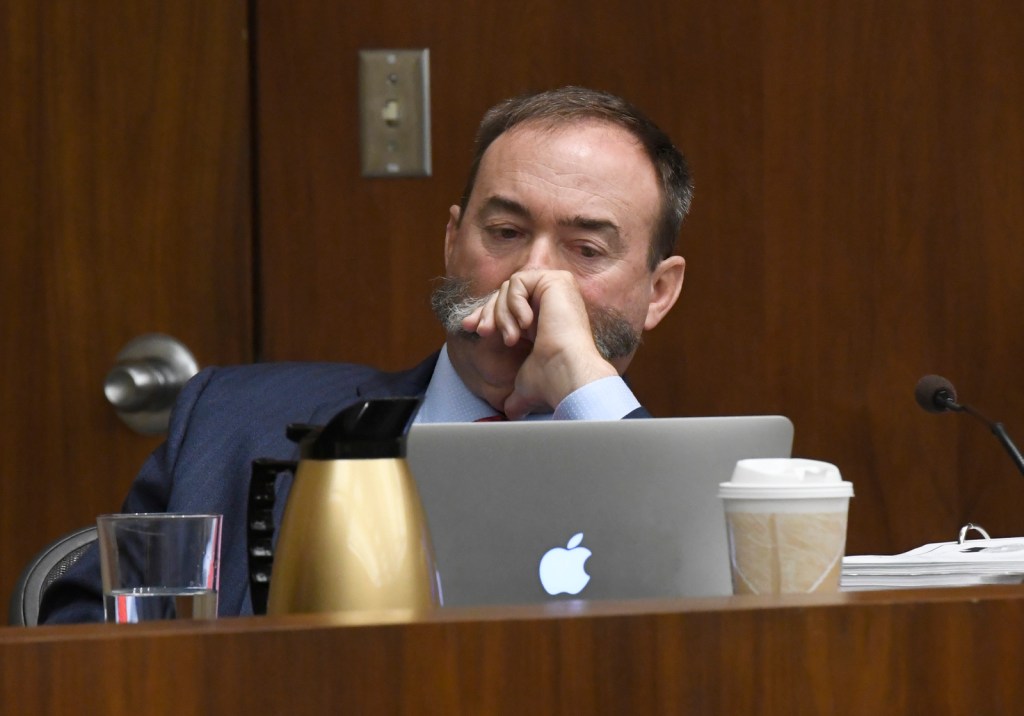After months of bitterly acrimonious deliberations over cannabis policy — interspersed with frequent personal attacks — the tone and tenor of this week’s Board of Supervisors meeting was jarringly cordial. County Supervisor Peter Adam noted with considerable relief, “I wanted to say how nice this discussion has been.”
It was also unusually productive. In a couple of hours, the supervisors managed to pass a hatful of measures designed to tighten the screws on cannabis cultivation in response to growing backlash against a newly legalized industry. The votes were often unanimous or 4-1.
For starters, the supervisors voted to impose a cap on the total acreage of cultivation that could take place at any one time. That’s a big deal because until this week, Santa Barbara was the only coastal county without such an upper limit. Supervisor Joan Hartmann — who represents the 3rd Supervisorial District and is up for reelection next year — pushed for the cap, arguing it would help relieve much of the collective “anxiety” and would help understaffed county planners handle the avalanche of cannabis related applications — 171 are pending.
When Hartmann initially hinted at such a cap, its chances were regarded as remote. But as cannabis generated more heat, the idea of a cap got legs. In their deliberations, the supervisors were all over the map as to how many acres they thought should be allowed under the cap: Peter Adam first proposed 200 acres and then 1,000. Adam, usually the most libertarian-inclined supervisor and a farmer himself, pushed for the bigger cap because he worries that cannabis is hampering the cultivation of existing crops such as avocados and wine grapes.
Ultimately, the supervisors voted to peg the cap to the amount of acres in the cannabis cultivation permit application pipeline as of July 9. (That’s the same day, not coincidentally, that more than 200 members of the public spoke for and against cannabis at a 10-hour supervisors’ meeting. By contrast, no members of the public spoke this Tuesday.) As of this week’s meeting, the actual number was not definitively known. With cannabis, the numbers are always changing. And they change fast.
How big that is remains a matter of perspective. The Environmental Impact Report for the county’s Cannabis Ordinance envisioned no more than 1,126 acres under cultivation. Right now, there’s about 1,000 acres actually planted in the soil. And that doesn’t count the cap the Carpinteria Valley has had: no more than 186 acres. There are 207 acres’ worth of applications submitted. Obviously, not all applications will make it.
For 1st District Supervisor Das Williams, a strong champion of a regulated and taxed cannabis industry, the past few months have been searing. Williams lives in and represents Carpinteria, where residents have complained bitterly about intrusive odors emanating from greenhouses growing cannabis. Williams, a political professional with deep roots in the Democratic Party and environmental establishment, was seen as all but unbeatable in political contests until recently. But in the past few weeks, it’s appeared increasingly likely that Williams might face a well-funded challenge from school boardmember Laura Capps, also an accomplished political pro and scion of a beloved political clan. (Last week, Williams secured the endorsement of the Democratic Central Committee for a supervisorial election that takes place next year.)
This Tuesday, Williams was emphatic about passing measures that would require the installation of odor-control systems in the greenhouses. One measure would require that the systems be installed and proven effective before the county issues a grower a land-use permit. Now, odor-control systems are required only after land-use permits and business licenses have been issued. To put that in perspective, to date, only two cultivation applications have thus far managed to secure both. Likewise, Williams successfully pushed for a measure that will allow the county to file nuisance complaints against cultivators who do not install odor-control systems in a timely manner and will require meteorological and wind studies for greenhouse applicants in order to ascertain where anticipated smells originate.
The thorniest issue to confront the supervisors was that of buffers between rural and urban boundaries in communities such as Goleta, Buellton, Solvang, and Los Olivos. Supervisor Hartmann, who represents these communities, pushed for 1,500-foot buffers, arguing such gaps are necessary to prevent odors wafting over from larger cannabis operations. The existing buffers, she said, are inconsistent, irregular, and ineffective. Hartmann didn’t have the votes to pass such a measure outright and pushed instead to refer the idea to the planning department for consideration. Supervisor Gregg Hart at first argued against this plan but ultimately voted for it. In his opening remarks, Hart alluded to a line from the Rolling Stones, whom he called “a couple of famous British philosophers” — “You can’t always get what you want, but if you try sometime, you find you get what you need.”

